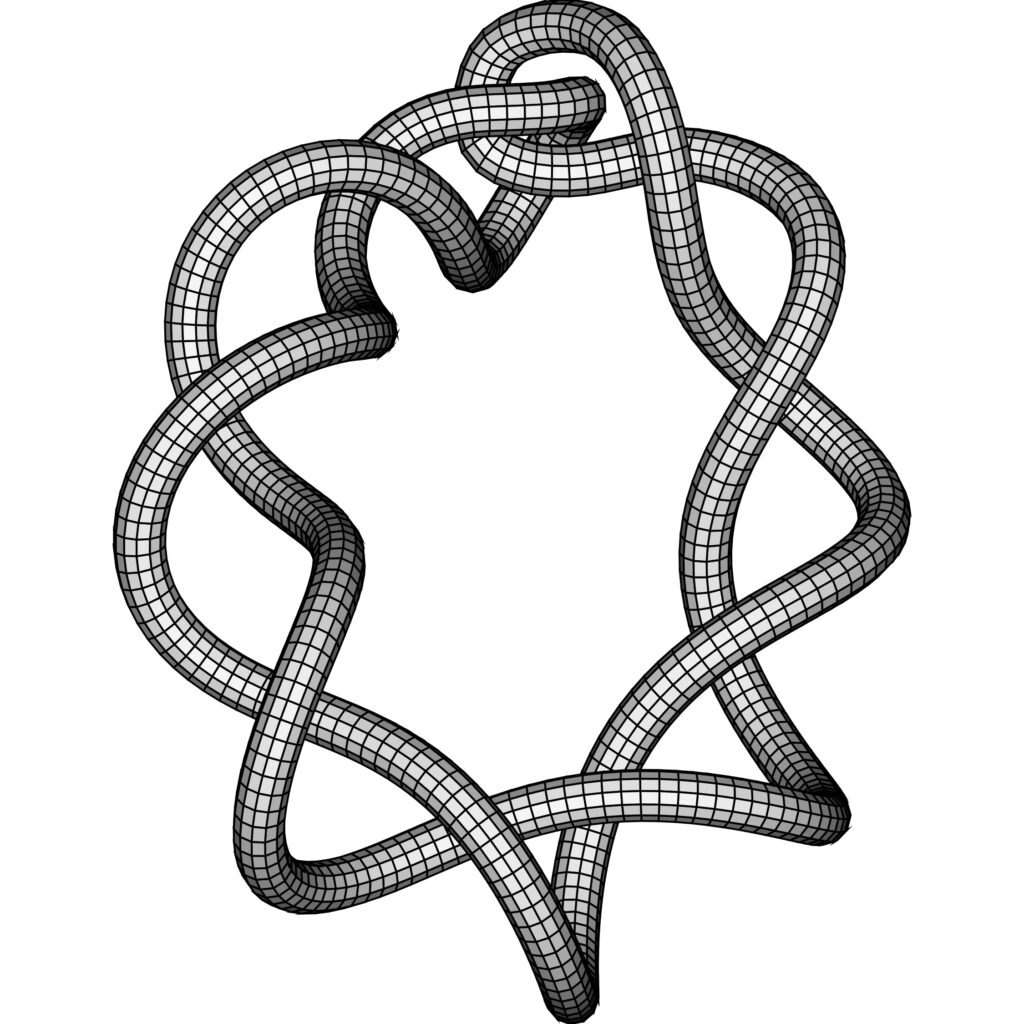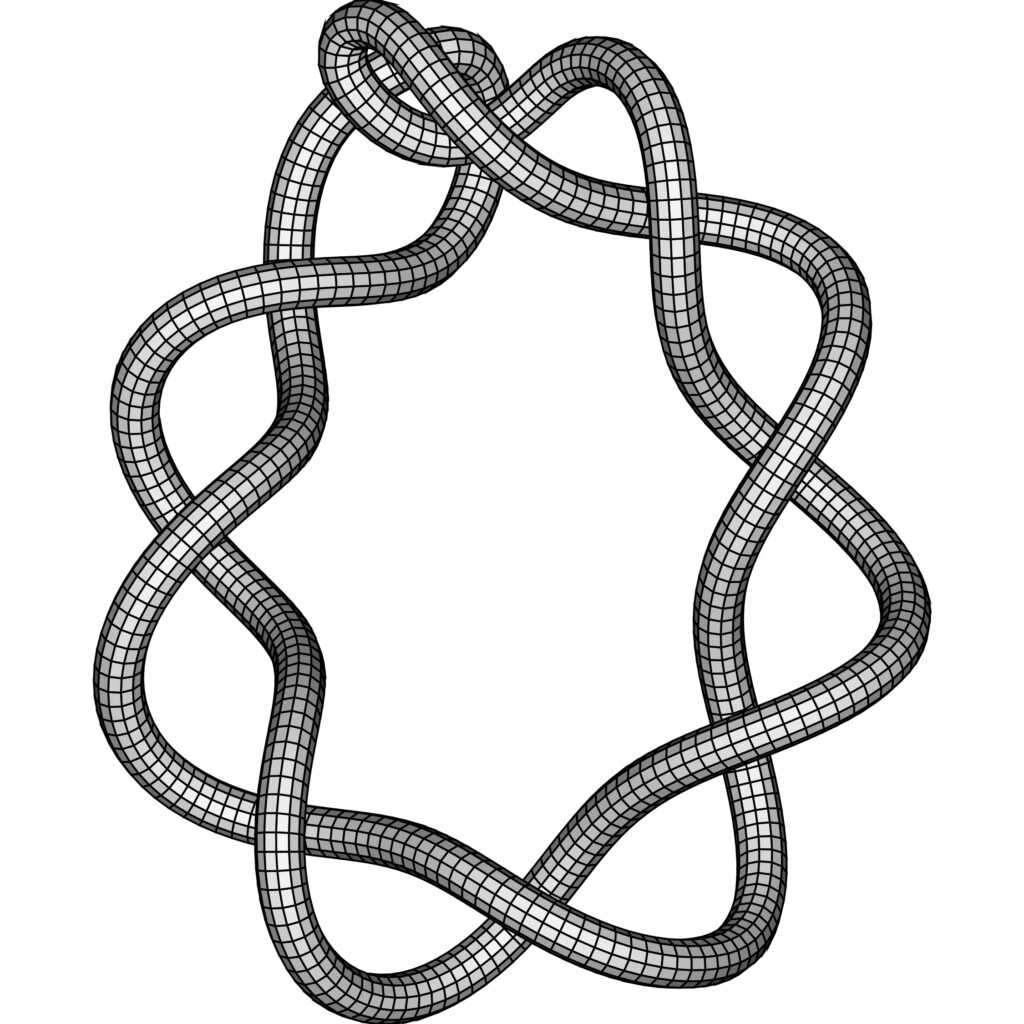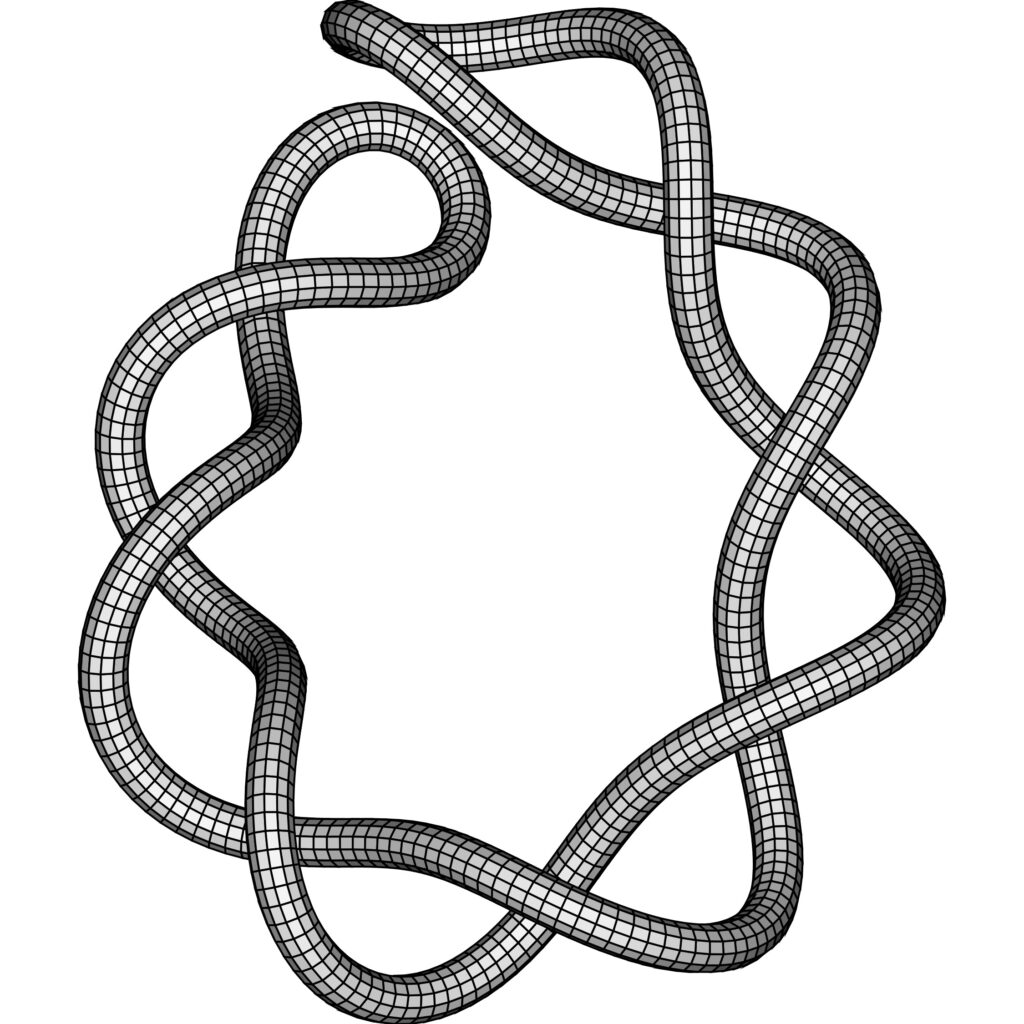Chapter 10: Crossing Number
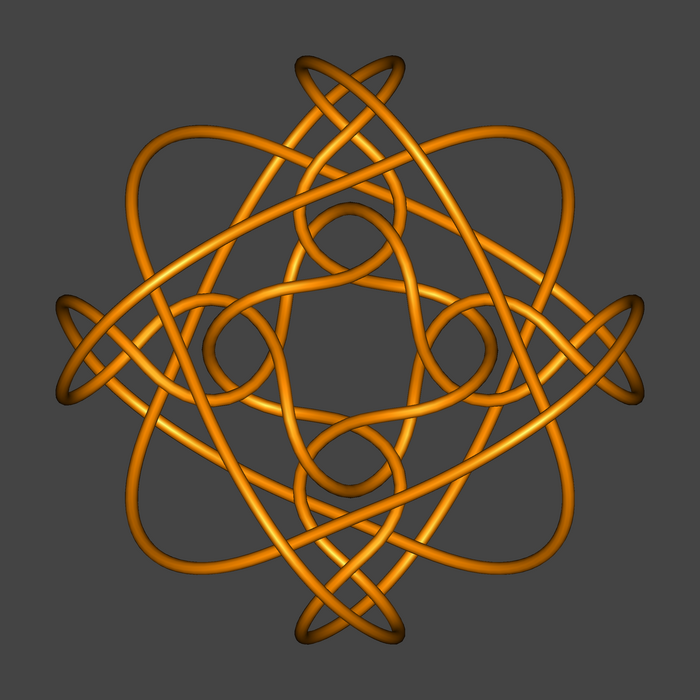
The crossing number of a knot-type is the minimum number of isolated crossings required in a planar diagram of the knot. If you can draw the knot with N crossings, then you know the crossing number of the knot is at most N. The crossing number does not uniquely identify the knot or link. For example, both the left and right trefoil have crossing number three. But even knots or links that look very different can have the same crossing number. For example below we have the figure eight knot and a link that both have crossing number four.
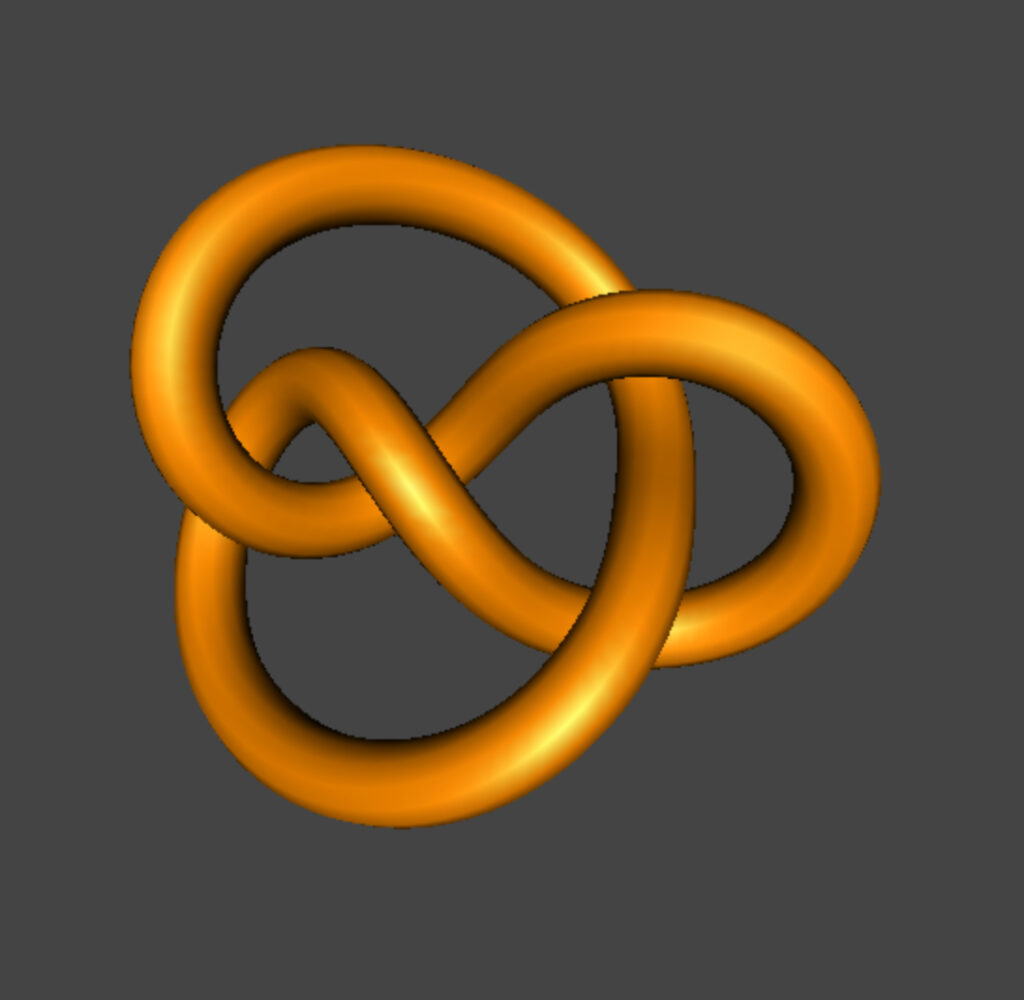
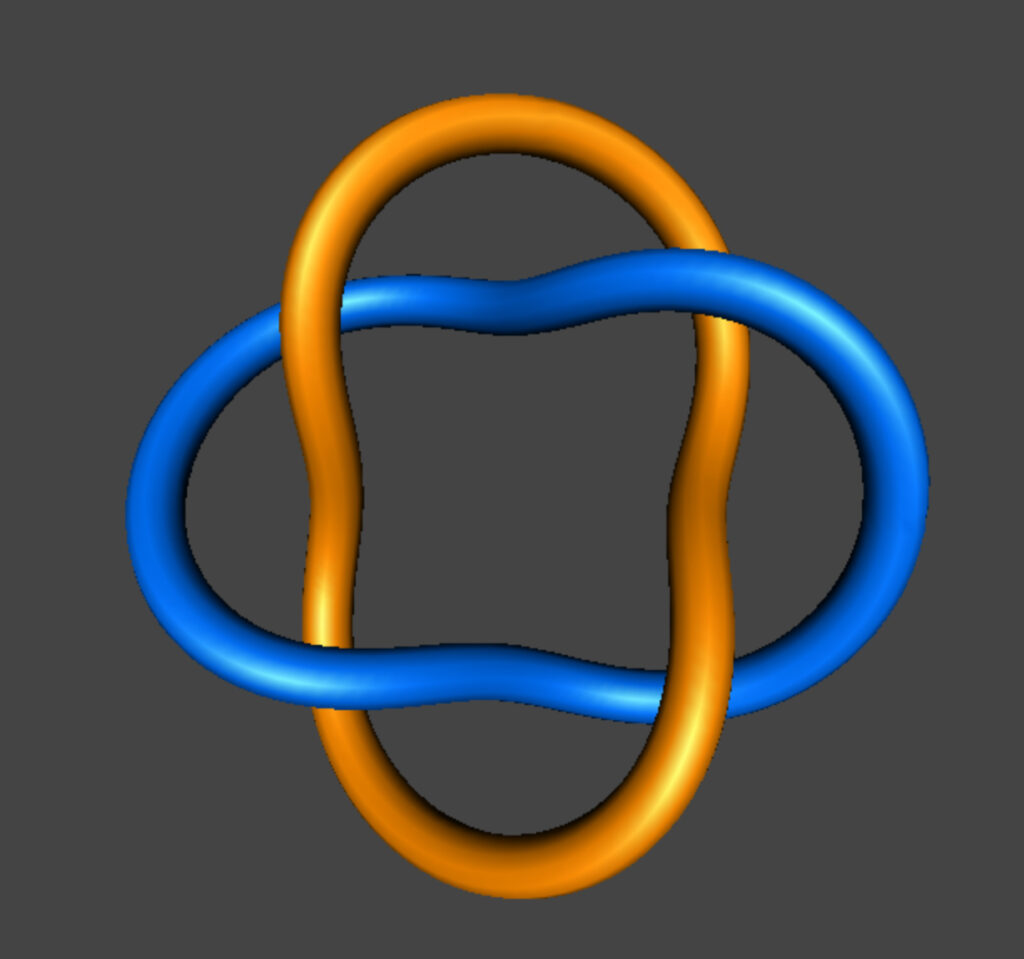
Crossing number can give us a nice way to think about topology. All of the images in the series below are trefoils, which means that whatever else, they must have at least three crossings.

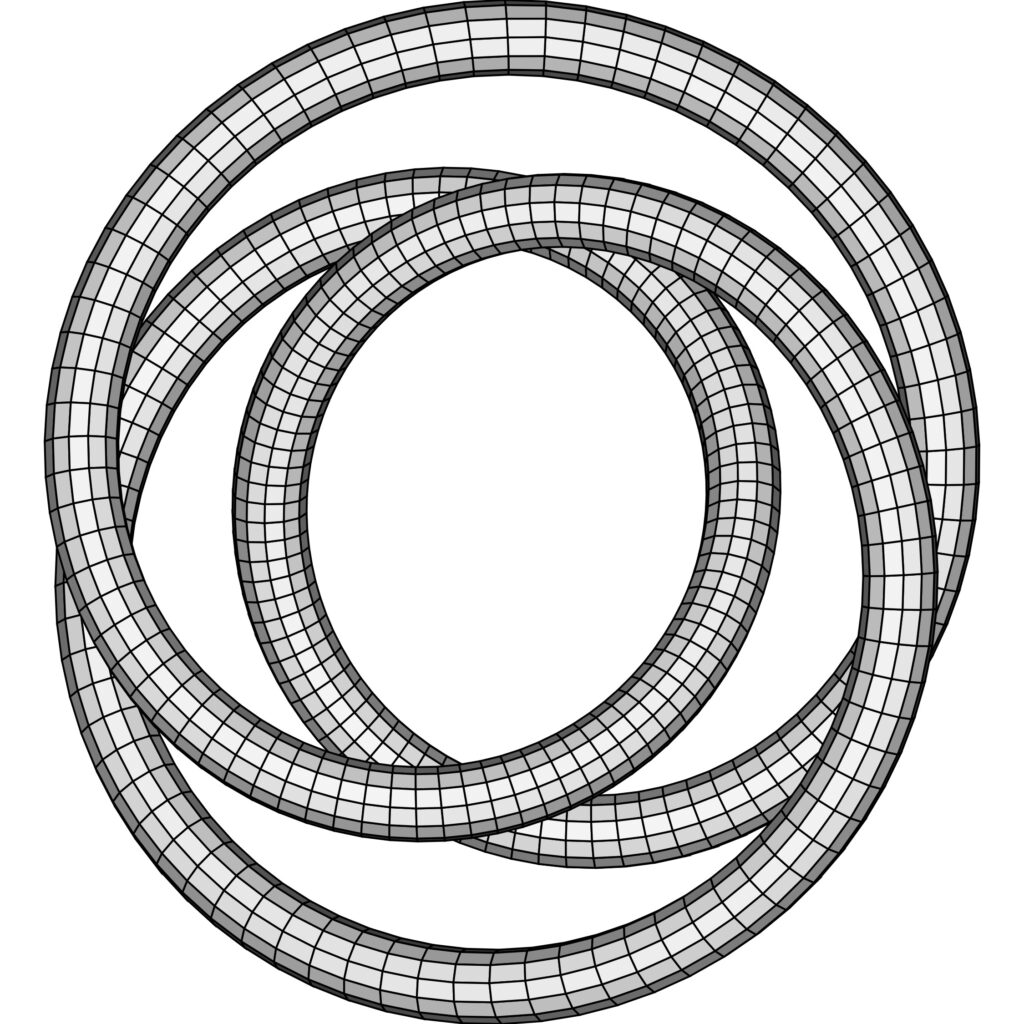
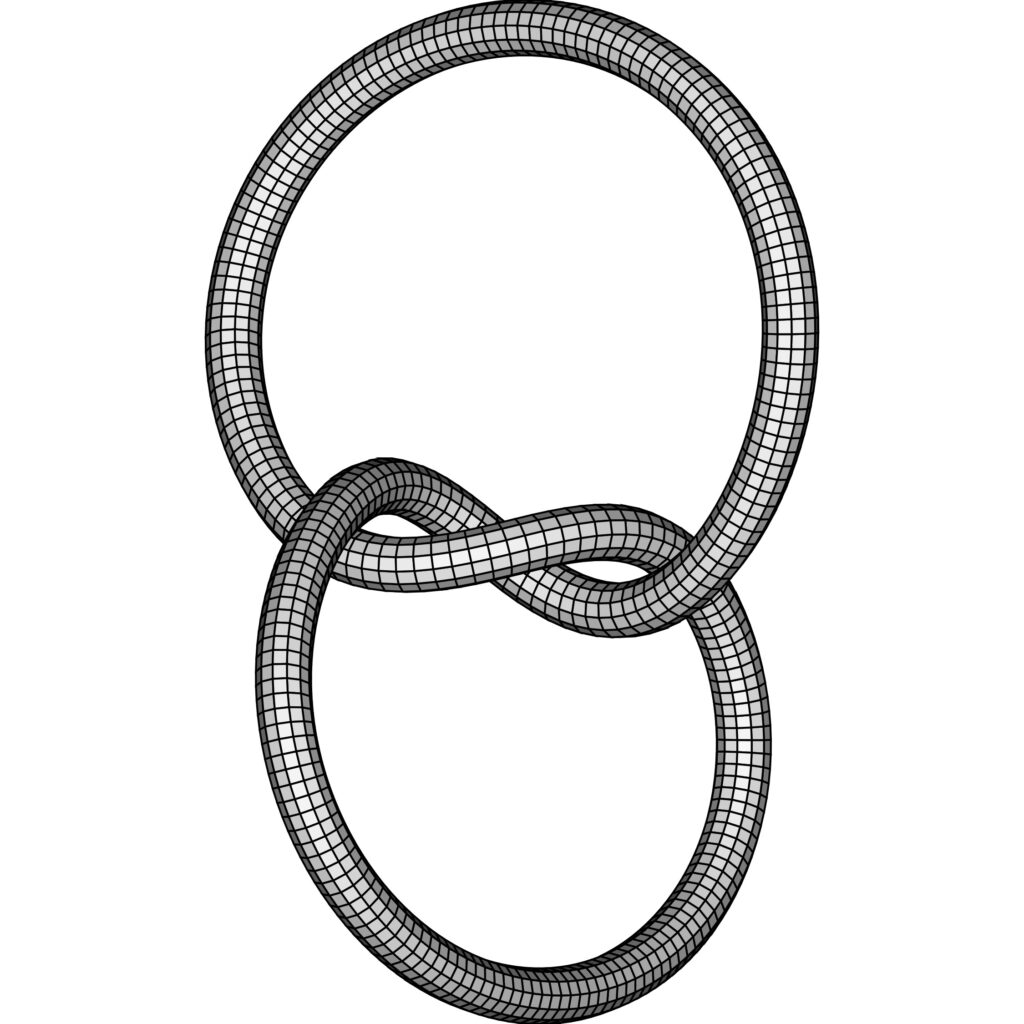
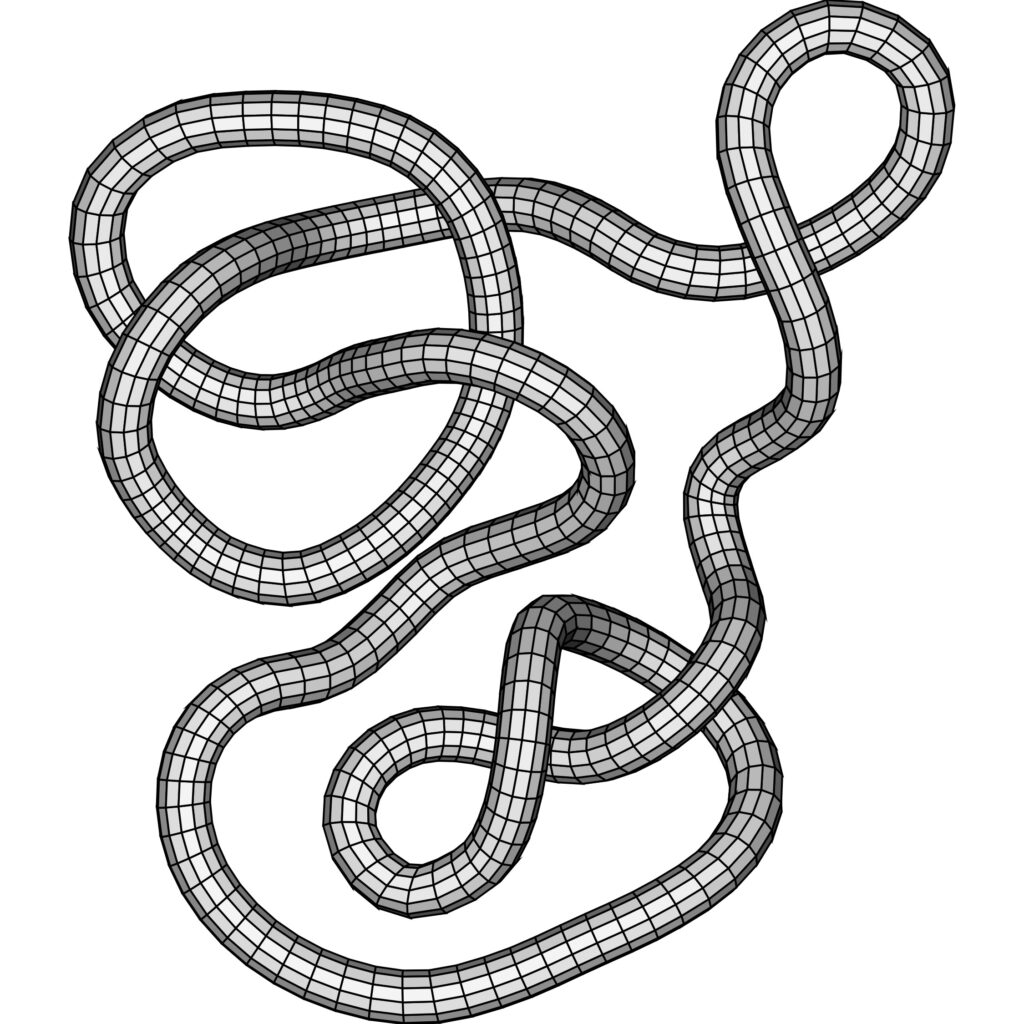
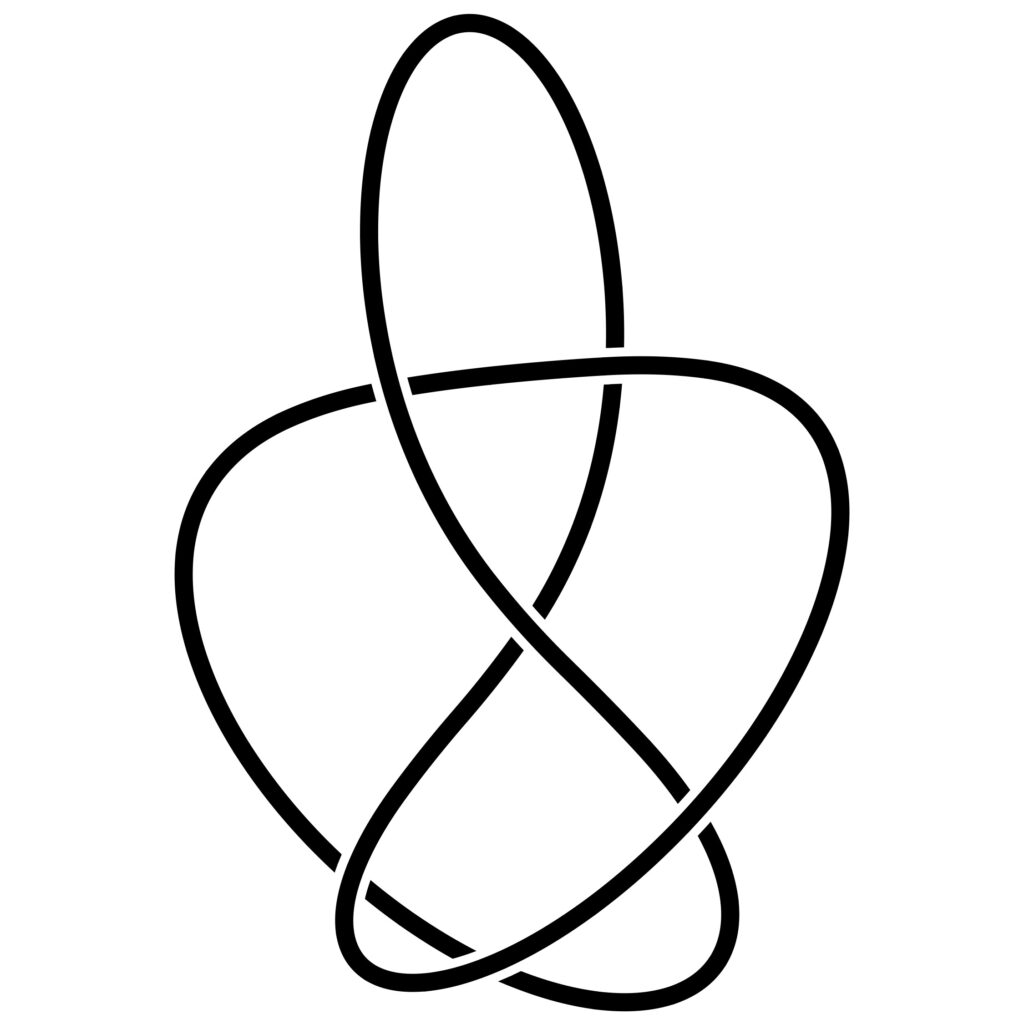
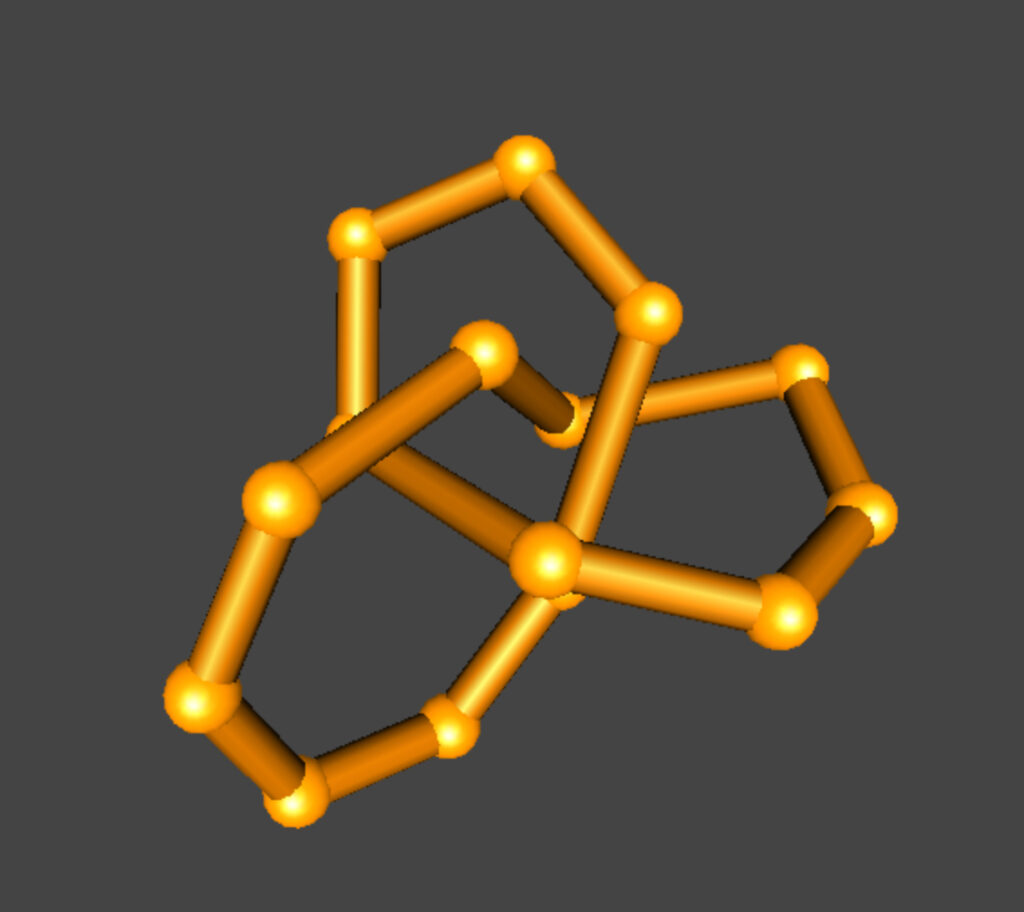
It can be very difficult to determine the number of necessary crossings. Below we have two complex loops, that are in fact the unknot. The one on the left is called the Haken Unknot, and has been used as a test case for simplifying algorithms. The Unknot on the right has 111 crossings in its current stage.
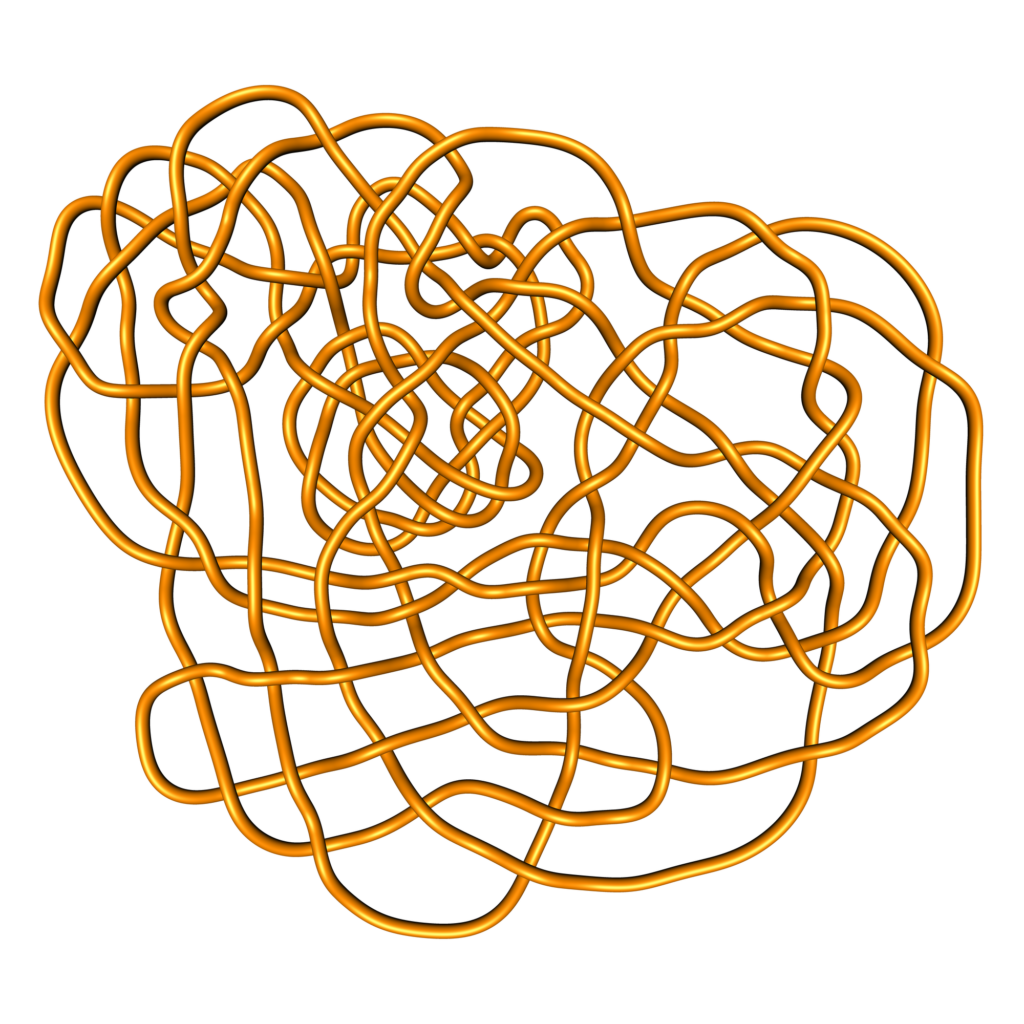
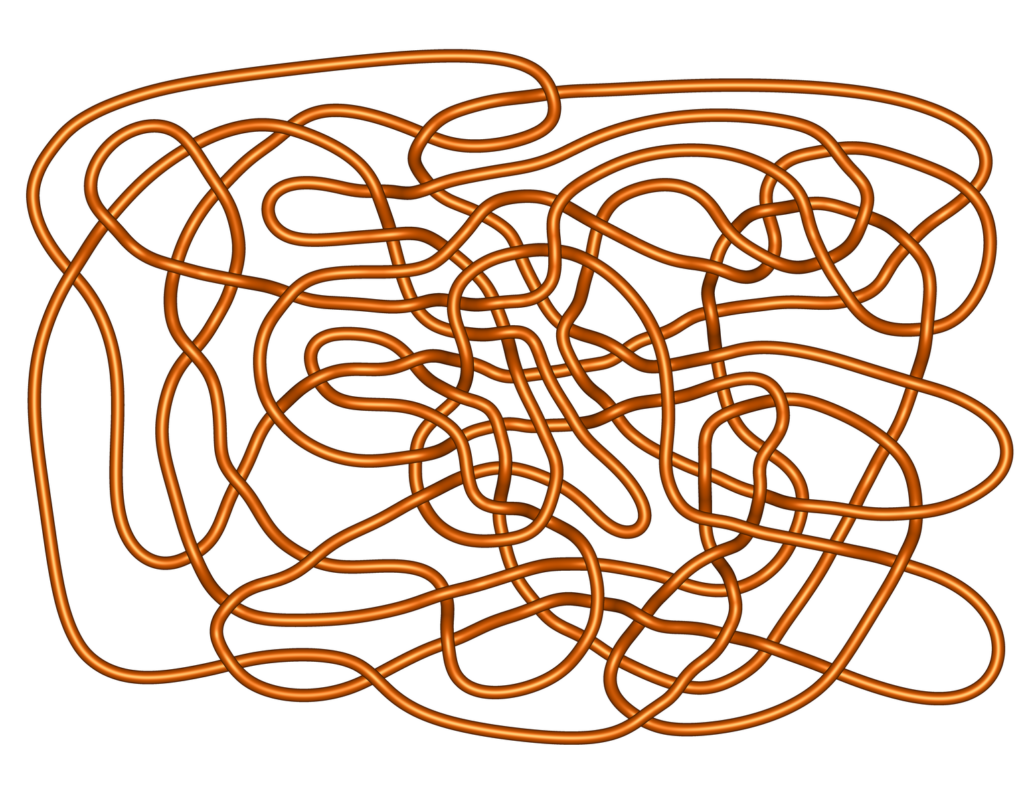
The unknotting number for a knot is the minimum number of crossings one needs to change to make the knot topologically equivalent to the unknot. It is the minimum number of changes required in any planar diagram of the knot. We saw in chapter 9 that changing one crossing in a three crossing trefoil changed it into the unknot, so the unknotting number of the trefoil is one. Consider the 2,5 torus knot, also called the star knot. If we change one of the crossings, the knot becomes the trefoil, as we can see below. So with two changes, we can get the unknot. So the unknotting number of the star knot is at most 2. The first image is a planar diagram of the star knot. The second image is a 3D version of the same configuration of the star knot. The third image is a planar diagram after a crossing change. One way to see the change: in the first image, as we walk along the curve we go over, under, over, under, etc., alternating as we go through each crossing. In the third image this is no longer true, in one place we go over, over, and when we approach those crossings again it is under under. The fourth image is a 3D version of the third one. The two crossings with the over/over (or under/under) pattern can now be removed with a Reidemeister type 2 move. Image five is 3D rendition of a step in physically pulling the inside loop over the outside — the physical action of a type 2 move. Images six and seven are the result: a trefoil.

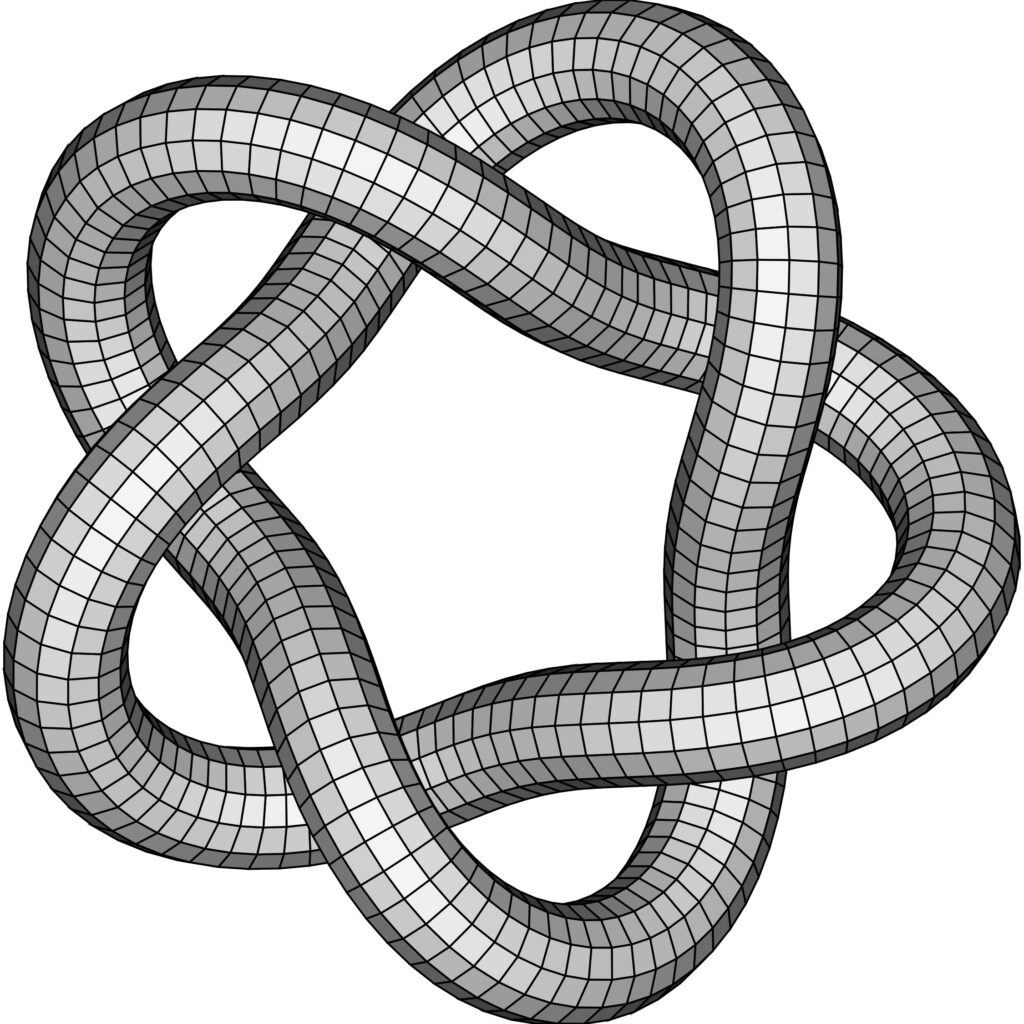
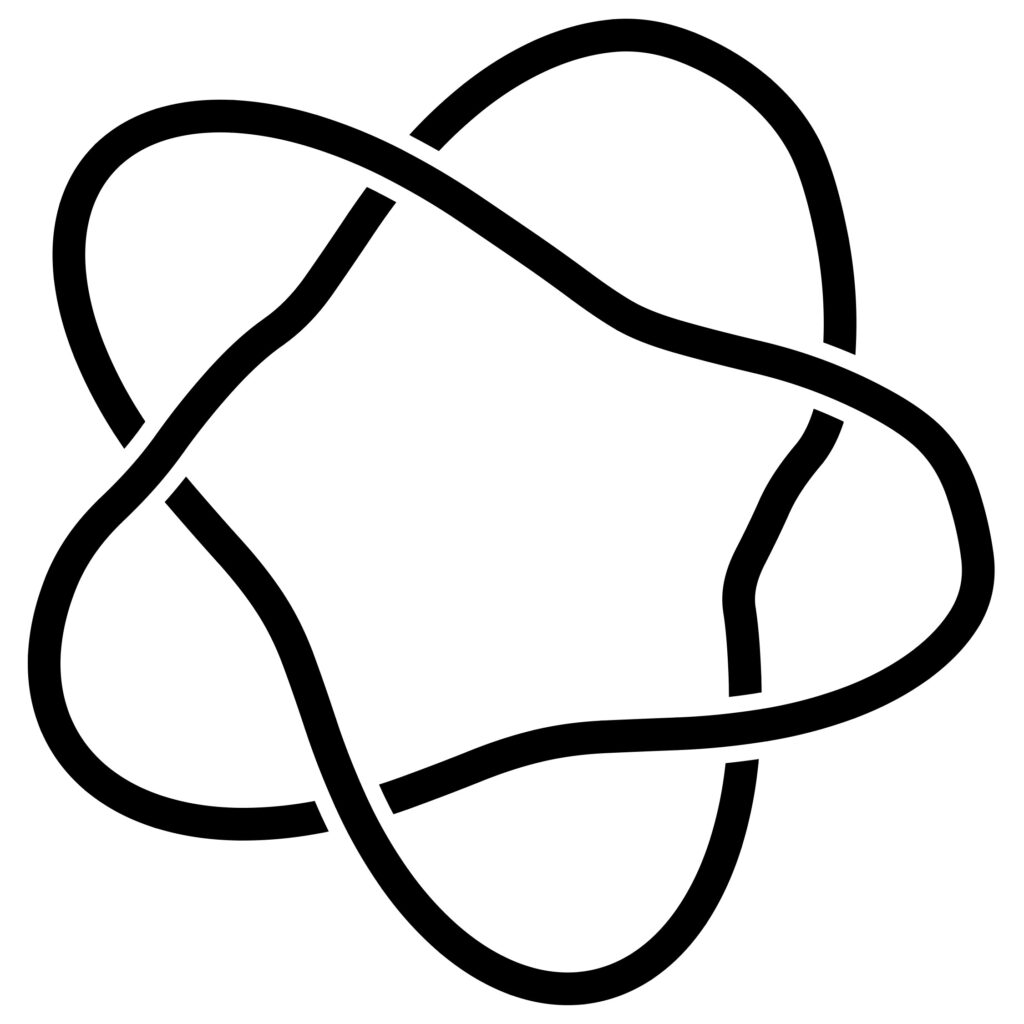


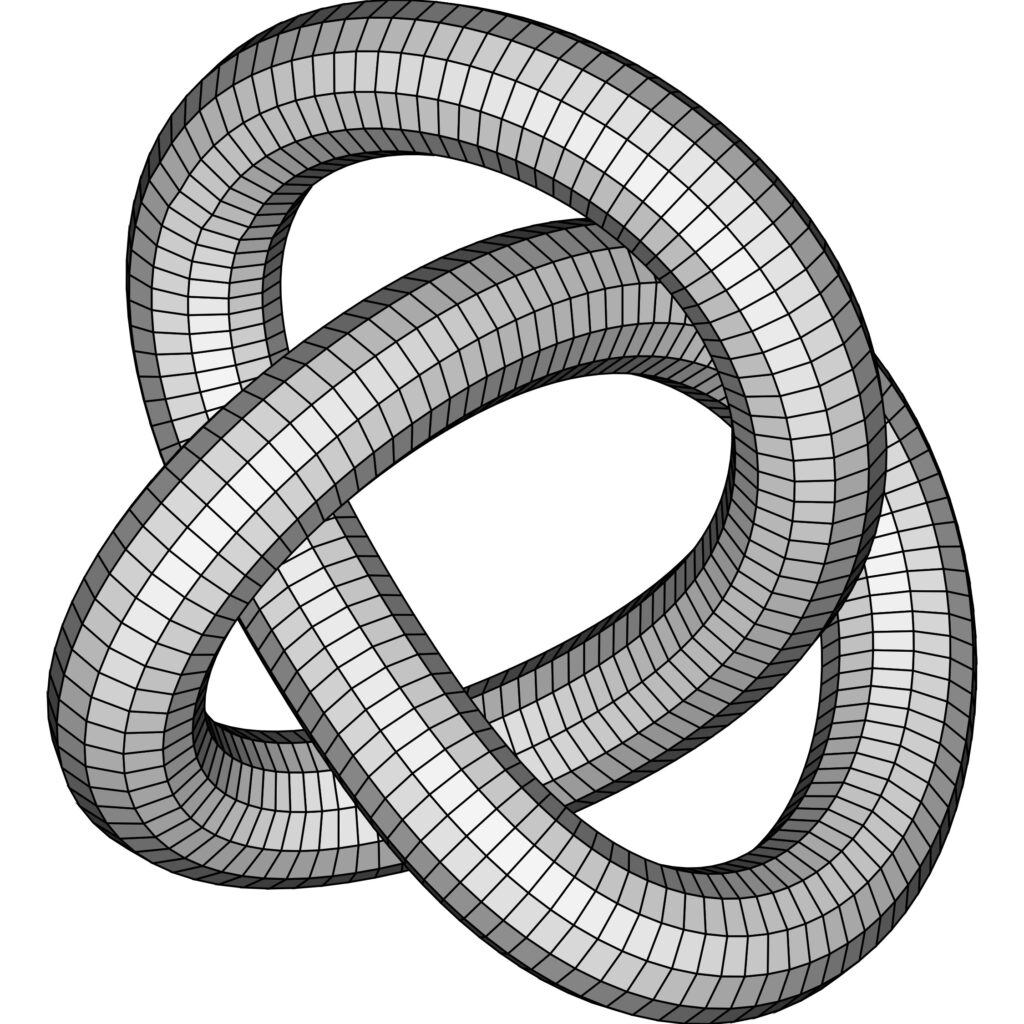
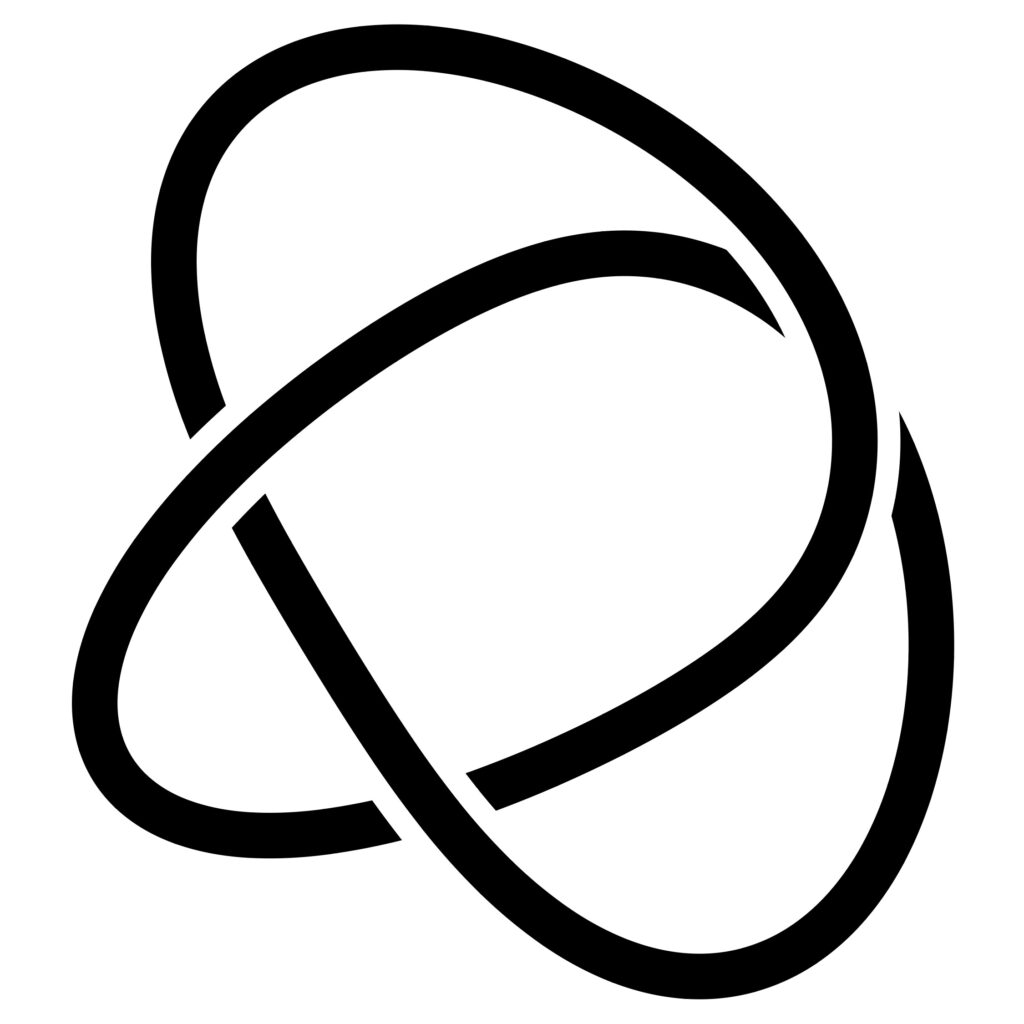
The procedure we used for the 2,5 torus knot can be used for any 2,N torus knot where N is an odd number. (If N is even it is a two component link, not a knot). Pictured at right is a 2,11 torus knot. With one crossing change it becomes a 2,9 torus knot, and so on, losing two crossings for each change. So it has an unknotting number of at most 5.
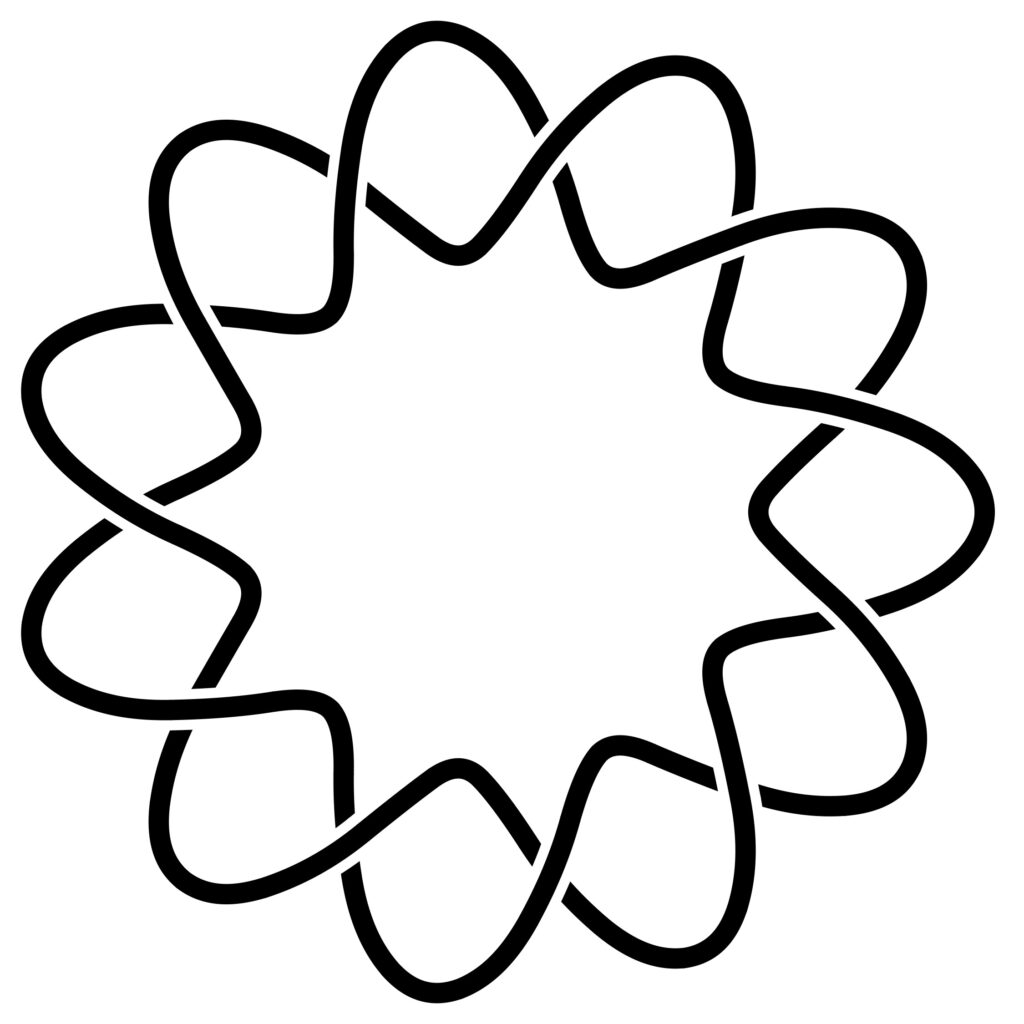

From the example above, one might surmise that knots with high crossing number, or high ropelength, or high complexity by some other measure, necessarily have high unknotting number. This is not the case, which we can see in a couple examples. The first is a knot based on the basic crochet stitch. The stitch consists of pulling loops through loops as illustrated below.
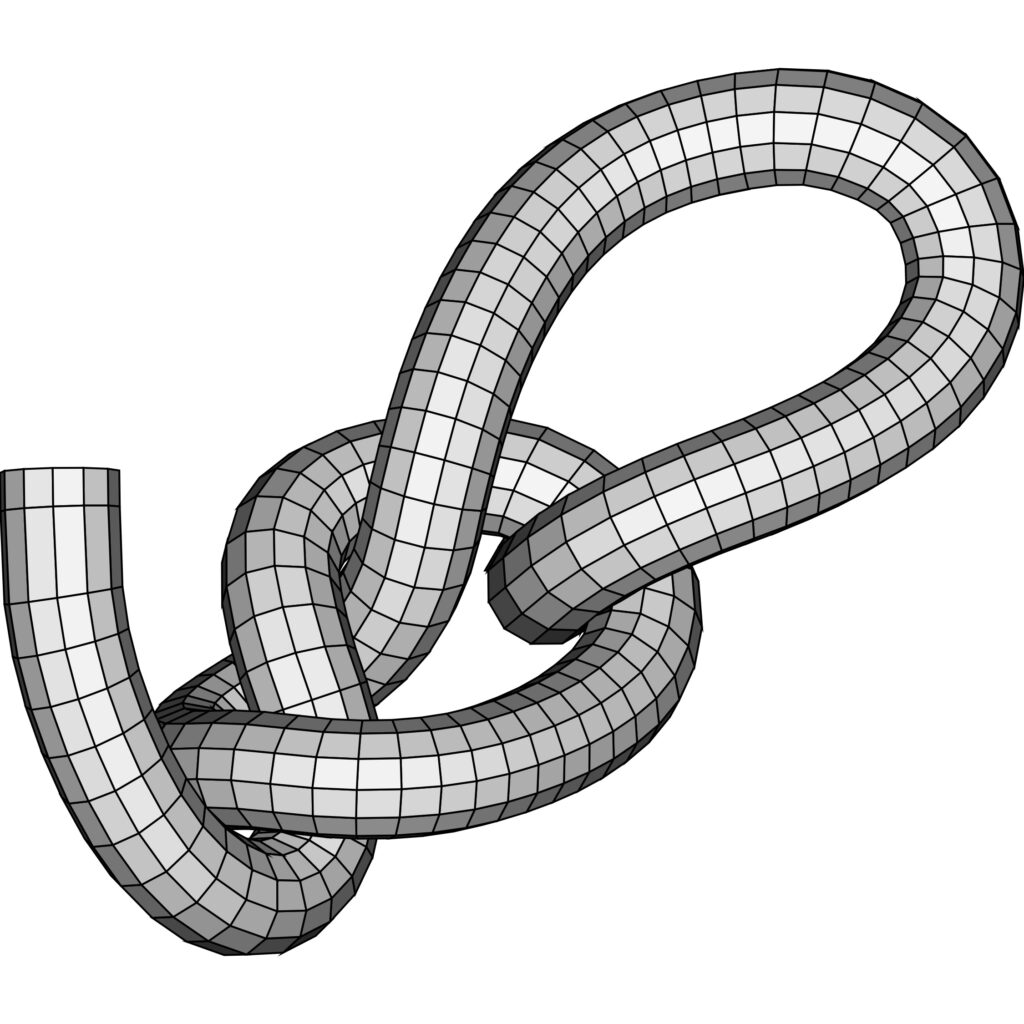
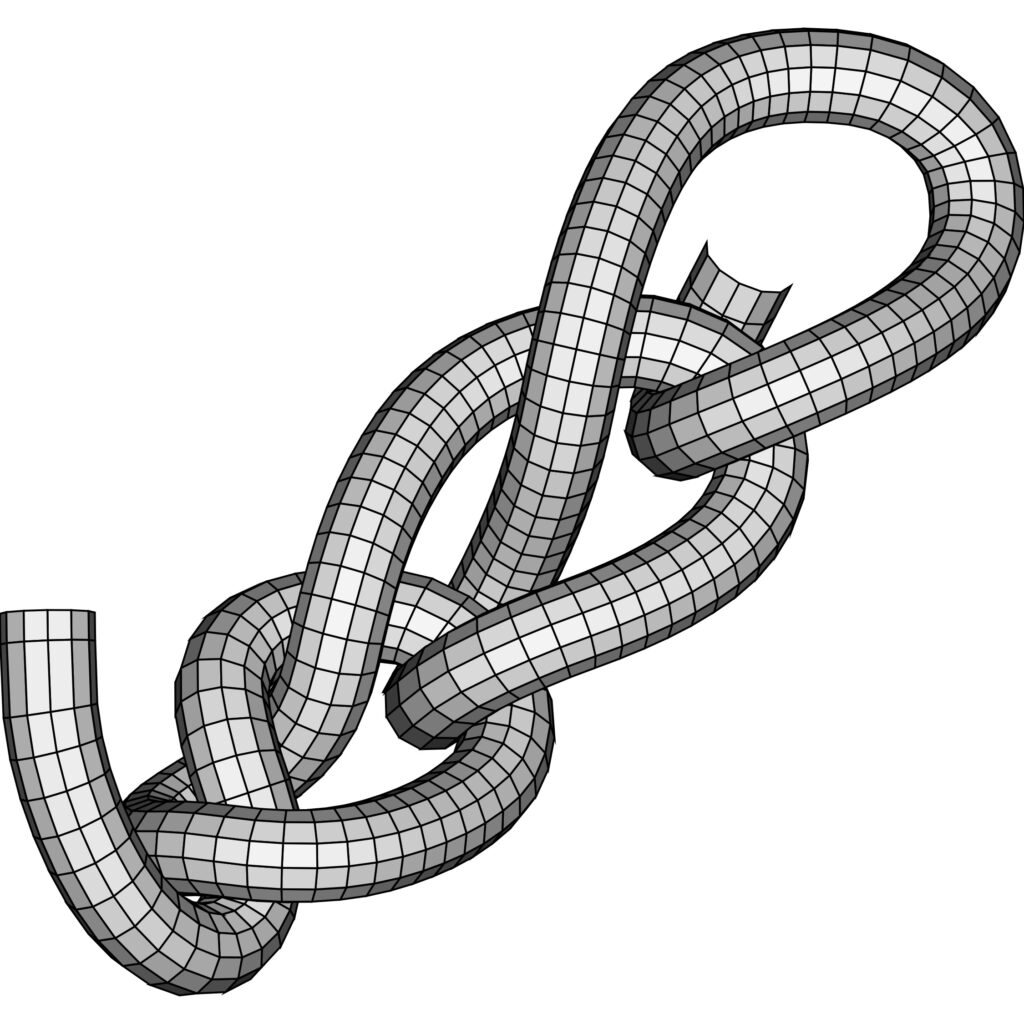
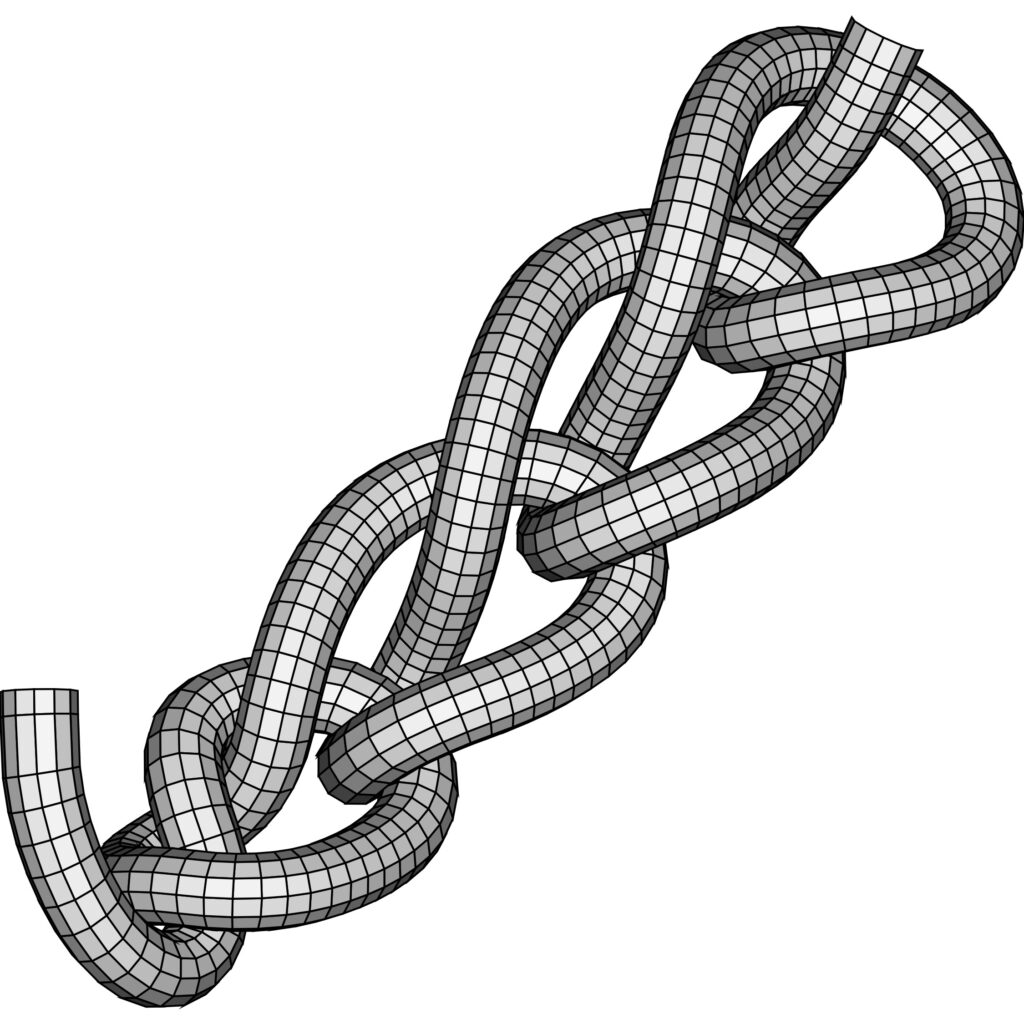
We can make a knot of high crossing number with the stitch if we pass an open end through the last loop as pictured below. If we were to grasp the two open ends and pull in opposite directions, we could not pull the entanglement out. On the other hand, in the image on the right, the open end is not passed through the last loop. If we pull in opposite directions the construction unravels stitch by stitch to become a simple open line with no crossings.
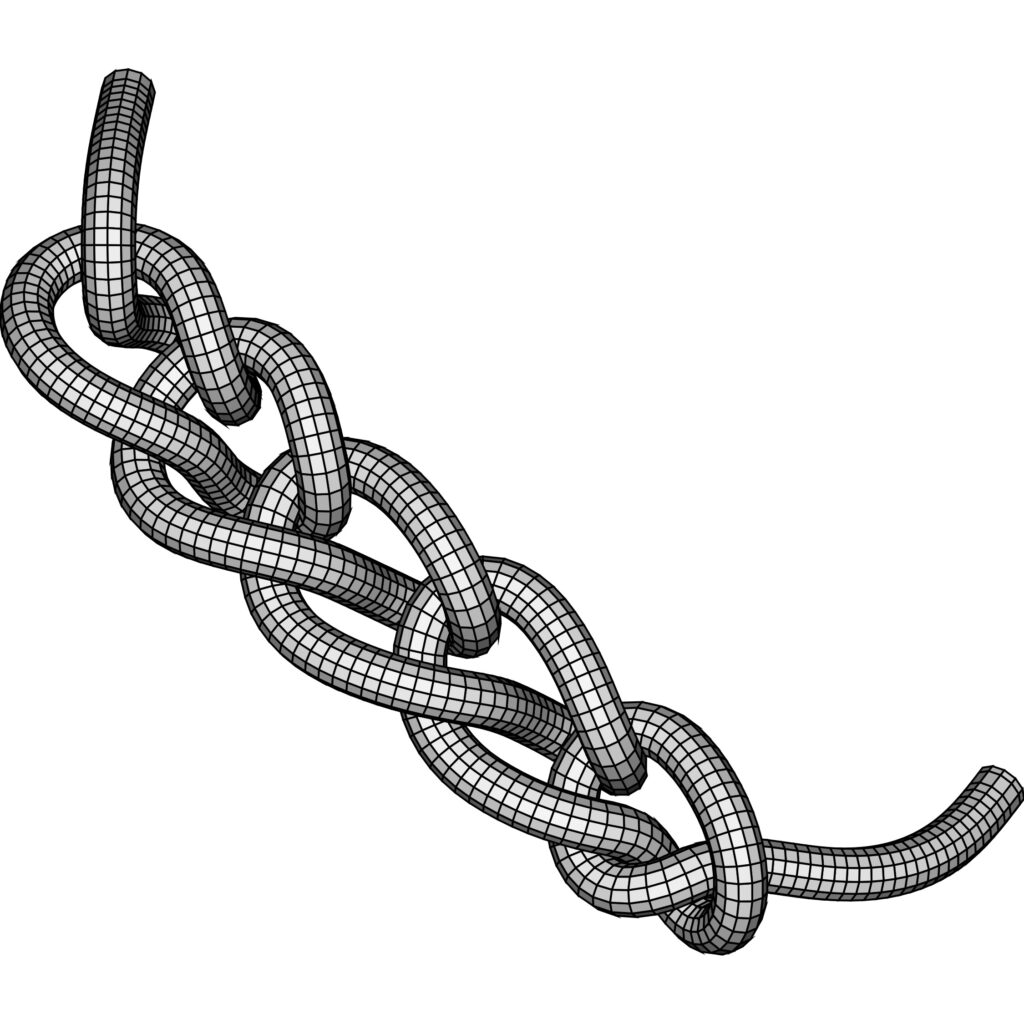
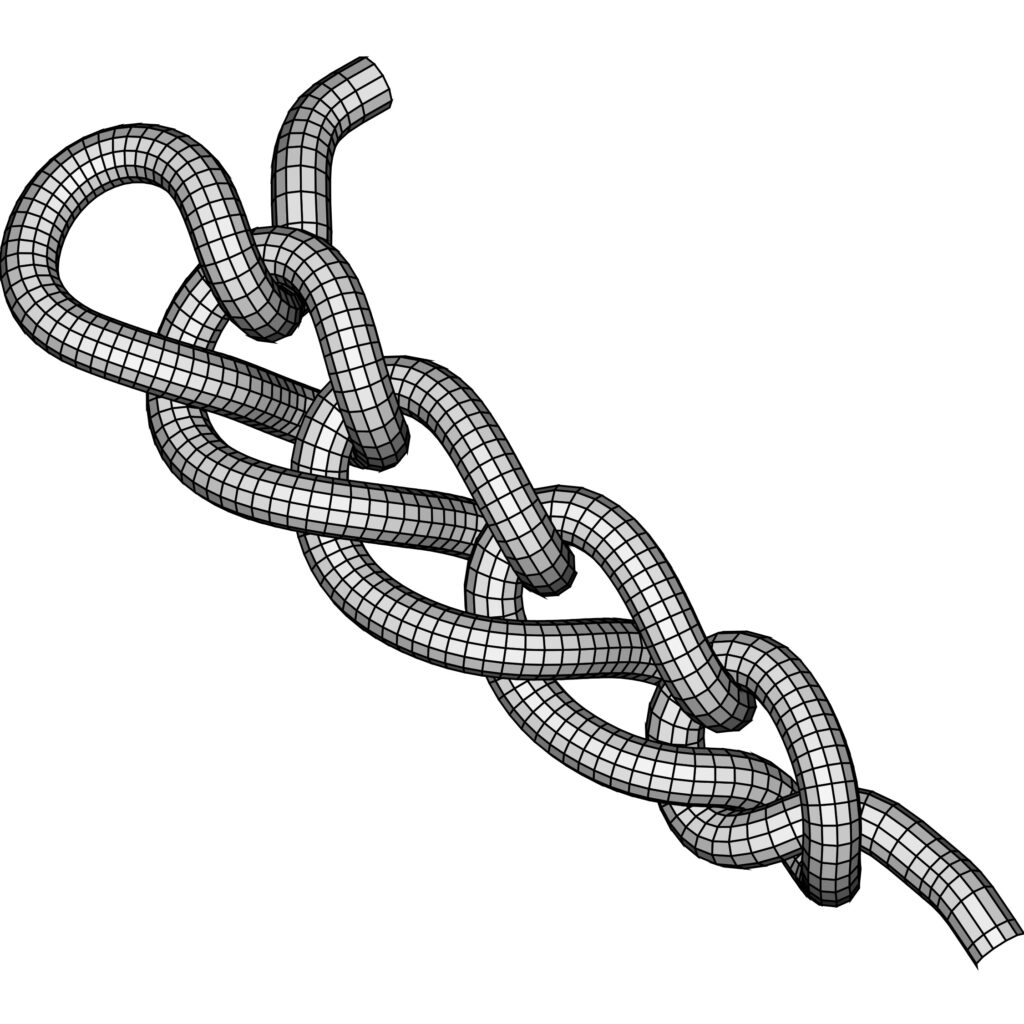
We can close the loops in the two constructions. If we do not pass the end through the last loop before closing, we get the unknot. If we do pass the end through the loop we get a knot with high crossing number, but which has unknotting number one, since changing the crossing at the last loop gives the unknot.
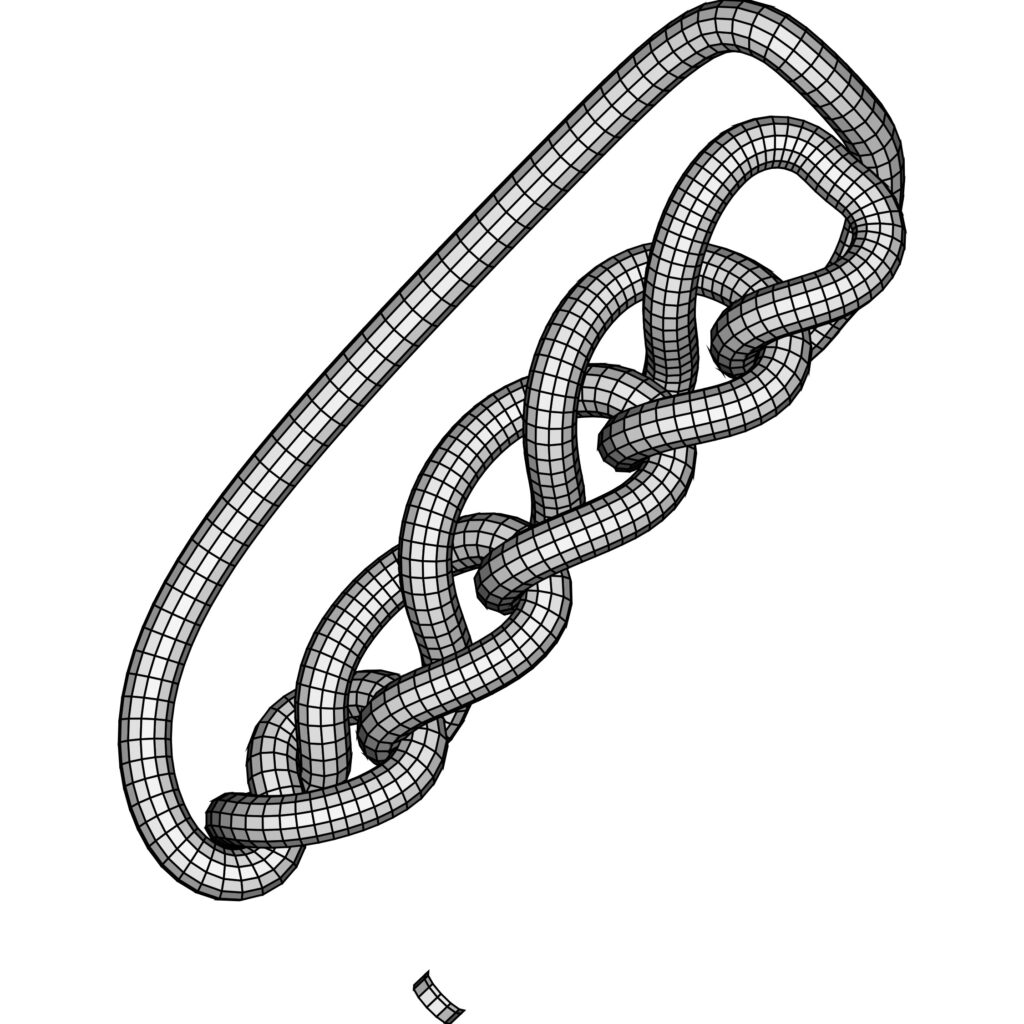
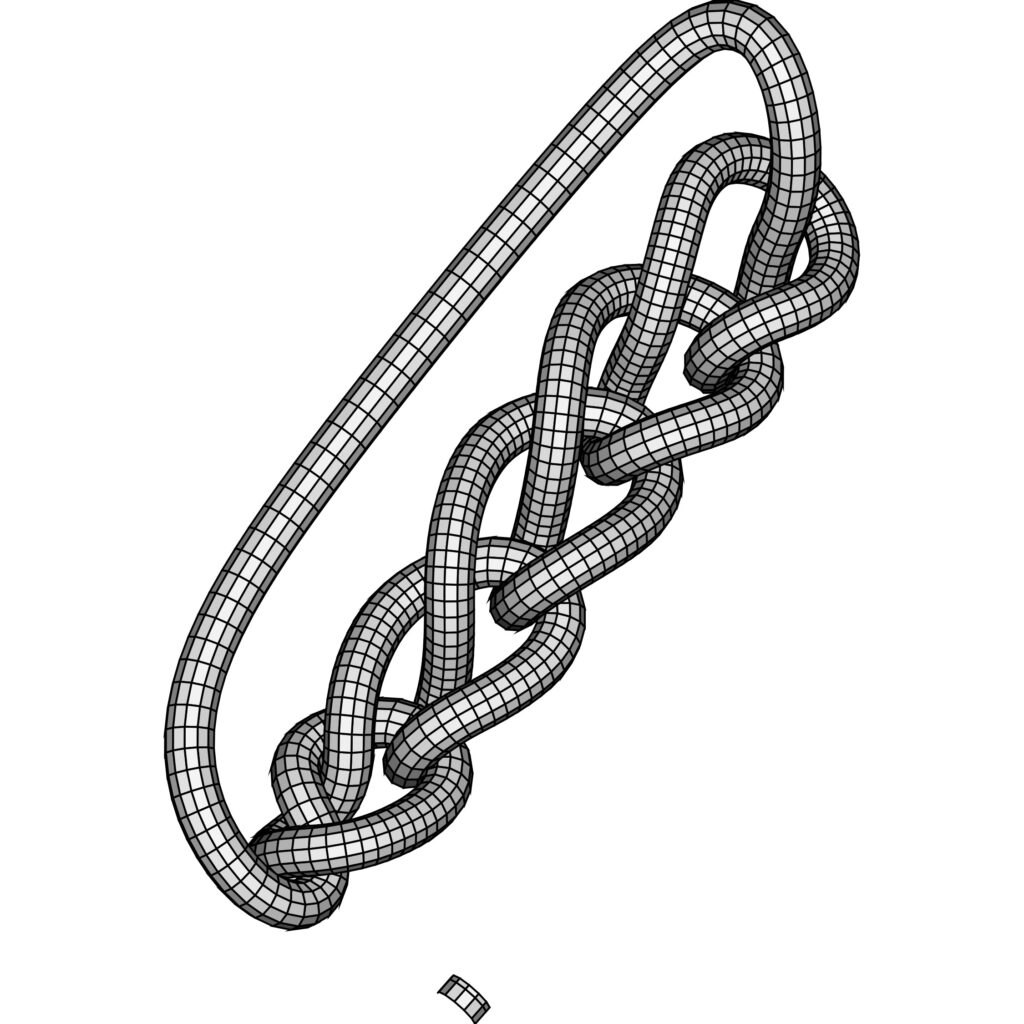
The crochet stitch gives a perhaps useful way to wrangle long electrical extension cords. First find the midpoint of the cord by grabbing the plug ends, and pulling the two strands through the hands until arriving at the bight at the midpoint. Using the bight as an end, use the crochet stitch on the doubled cord. This will store the extension cord in a manageable configuration that can easily be carried and will not become randomly tangled. Also, one only needs to pull out the number of stitches required to give the length needed for any particular job, which can then be redone when the job is finished.
Another example of high crossing number / low unknotting number is the N twist knot. If a crossing at the clasp is changed, it becomes the unknot, so the unknotting number is one, no matter how large N is.
